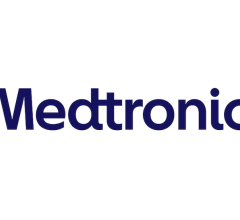
October 17, 2011 — The Detroit Medical Center (DMC) Cardiovascular Institute (CVI) has become the first cardiac care facility in Michigan to successfully open a patient's blocked artery with a breakthrough technology similar to an electrically powered "corkscrew drill." The technique painlessly removes the plaque buildup which causes peripheral artery disease (PAD).
The 45-minute procedure — conducted by CVI Director of Endovascular Medicine Mahir D. Elder, M.D. — was successful in restoring uninterrupted blood flow through the patient's femoral artery. The artery in question had been obstructed with a 100 percent plaque blockage caused by PAD.
"Yesterday's successful procedure, completed without invasive surgery and requiring less than an hour, is a significant step forward in the treatment of arterial blockages triggered by chronic arterial disease," said Elder. "For the first time in Michigan, a patient with a totally blocked artery was able to benefit from a powerful new technology that can remove even the most severe blockages – and without the cutting or stitches that are part of traditional bypass surgery.
"This patient was in danger of losing a foot – but thanks to this new procedure that we will now be using with PAD patients from all across Detroit and Southeast Michigan, that risk has been eliminated and she'll be going home in a day or two."
The patient who underwent the procedure was a 50-year-old postal worker from the Detroit suburb of Livonia, said Elder. "This patient had consulted with several physicians in recent years," he added, "and she'd been told that her only option was invasive surgery to bypass the damaged artery – which was 100 percent blocked by PAD-related plaque.
"Fortunately, however, the new 'corkscrew catheterization' technique that was unveiled at CVI yesterday doesn't require surgery at all. Instead, this state-of-the-art procedure uses a drill-like catheter powered by a small electric motor to remove the plaque-buildup on the walls of the artery, quickly and painlessly."
The new U.S. Food and Drug Administration (FDA)-cleared catheterization tool, known as the Avinger Wildcat Catheter, uses the automated tip rotation produced by a compatible hand-held motor (the Avinger Juicebox) to open up the artery. The tip of the drill is inserted through the catheter directly into the affected artery.
Because the technique doesn't involve any surgery, most patients are spared the pain, risk of infection and extended healing time that usually result from a surgical operation.
The successful operation was a highly promising breakthrough in caring for patients with PAD, said CVI President Theodore L. Schreiber, M.D. "PAD affects up to 20 million Americans today, according to the latest research data, and many of those patients are struggling with severe arterial blockages that often used to require amputation of affected limbs, and especially of the legs and feet," he said.
For more information: www.dmc.org


 November 08, 2024
November 08, 2024 








